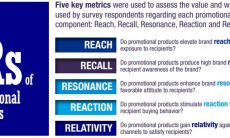Helping organizations create clear messages is the foundation of everything we do. Whether driving organizational change and transformation, crafting compelling web copy, engaging people through an elevator pitch, or designing a visual identity, a clear message is paramount but not always easy. Here are four reminders to help you craft the clearest messages you can about your work.
Focus
Here, focus does not refer to turning off your phone, locking yourself in a room, and concentrating on the job at hand, although that’s rarely a bad idea when creating. Instead, focus refers to your actual work. What is the overall goal of your organization? Why do you exist? Why do you care, and why should anyone else?
Sure, you must talk about how you do what you do, but always do it with the clearly-established context of why your organization exists in the first place.
Journey
When you’re passionate about what you do, it’s only natural that it occupies your consciousness day and night. We get in our heads. Here’s the thing, though. No one else does. We forget what other people do and do not know, often causing us to start our messages from a more advanced stance—like teaching a 400-level course to college first-year college students. Or, recapping season 3, episode 6 of a Netflix series to someone who’s only seen season 1, episode 4.
In order to craft clear messages, we must get out of our own heads and journey into those of the people we’re trying to reach. There are many ways to do that, from simply pausing long enough to consider their points of view to conducting market research.
Decide
“It’s important for everyone to know about the work we’re doing.” How many times have you heard or said that? But, is it? Is it really important for everyone to know about the work you’re doing? And, is simply knowing enough?
Most of the time, the answer is no to both those questions. First of all, it’s unlikely that everyone needs to know about your work—even if it’s work that affects the entire population. Why? Because there will always be a large swath of people who will not care even if they should. It’s more important to focus your attention on those whose opinions you can change or at least reinforce. Plus, is awareness all you really want? The clearest messages are not only targeted to a specific audience; they contain either explicit or implicit calls to action. Decide about both the audience and the call to action before proceeding.
Emote
Think your decision-making process is just like Dr. Spock’s, based solely on facts? That is highly unlikely. As human beings, we make most of our decisions based on emotional impulses. We simply use facts, however, to justify them.
The clearest messages always have an emotional undertone in line with the organization’s brand and messaging strategy. That undertone supports clear messages verbally, through tone-of-voice, as well as visually, through a clear but emotive identity. Listen to episode 14 of Messaging on a Mission, “Messaging through Graphic Design,” with Senior Art Director Kim Vanni for a great discussion on the role of design in messaging.
If you’re striving to have clear messages about your work, remember to:
- Focus on the end goal
- Journey into the hearts and minds of your audience
- Decide who that audience is exactly and what you want them to do, and
- Emote in a way that reinforces who you are as a brand.
Of course, if you need our help, all you have to do is ask.
This article was originally published here.








